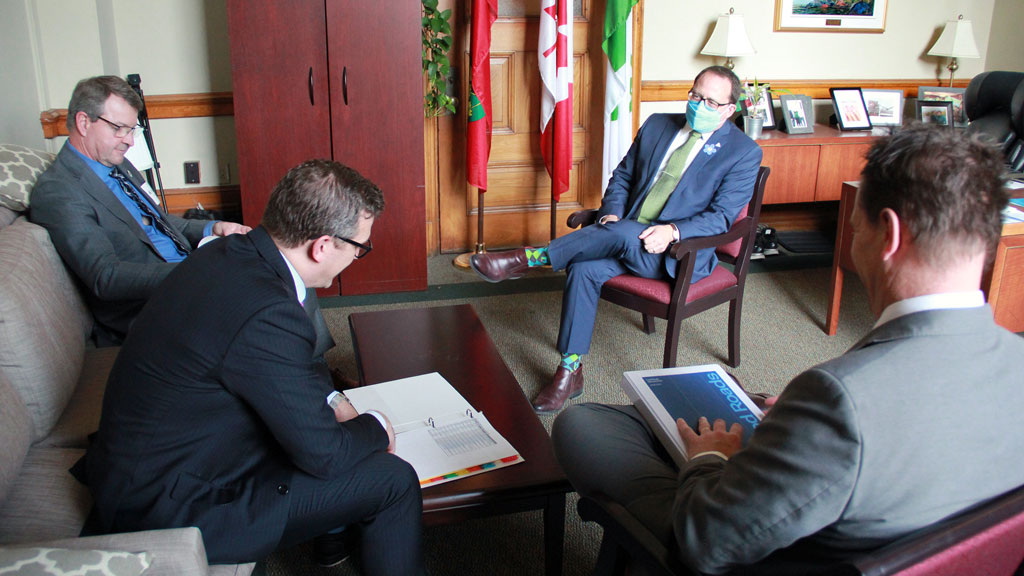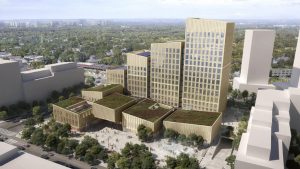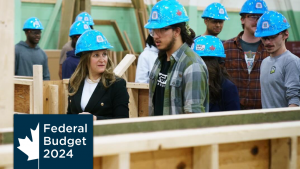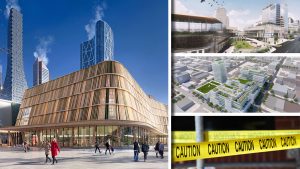Rural roads and reclaimed asphalt pavement (RAP) were two key areas of focus during the Ontario Good Roads Association’s (OGRA) advocacy day at Queen’s Park in Toronto.
“It’s our hope that this is the beginning of a longer process to get some headway made on these issues,” Scott Butler, executive director for Good Roads told the Daily Commercial News.
Although they have done advocacy before, this is the first time the association hosted a reception.
“We had about 50 meetings,” said Butler, adding about 22 board members, management and staff met with MPPs from all parties.
“We met with representatives from all four parties. The conversations were really constructive. There seemed to be both widespread understanding of the things we were asking for and why we were asking for them as well as some very discernable indications of support and willingness to see some of these initiatives move forward.”
The association brought two specific requests to Queen’s Park. The first pertained to RAP in construction and rehabilitation projects.
“Currently the provincial standard has a specification in there and what we’re seeing, for whatever reason and there are a host of reasons, road authorities aren’t…specing the use of RAP in their projects. We are asking for that to happen,” Butler explained. “The reason was really quite simple. We calculated approximately 6.7 million tonnes of this RAP sitting around waiting to be used. We’re at a point now where the science behind the use of this in projects has evolved to the point where the performance of the roads that are incorporating RAP into their mix are actually resulting in performance that you would expect from purely virgin materials or from, in a few cases, actually enhancing or surpassing the anticipated performance of a brand new road.”
The second was around a rural road safety program.
“What we were asking for was for some support to build out a program that would address the fact that rural roads are disproportionately dangerous,” said Butler. “At the same time, the rural population in Ontario is around 13 per cent.
“We’re seeing folks who are temporary foreign workers at agricultural sites predominantly in Essex County, Norfolk County, there have a been a number of cases where they have been killed on the roadside because they have been walking or cycling.”
Roadside safety infrastructure tools like guiderails, crash cushions and attenuators in rural areas are in need of an overhaul in some cases, said Butler.
“There are some legacy assets in there that should be probably removed and replaced with more cutting edge, more effective, contemporary designs and contemporary products,” he noted. “Municipalities are really feeling the effects of liability. Roadways are a leading contributor to their risk exposure. Our thinking was that if there was a way to improve that risk profile by making modifications to the roadways we should do that. Just as an intermediate step it seems rural roads in particular are the ones where the biggest bang for the buck could be found.”
Butler said the MPPs were receptive to the ideas.
“On the rural road safety one in particular, it’s an issue that cuts across a whole bunch of priorities both for local governments as well as for the provincial government, whether it’s improving liability exposure for municipalities, which the Ministry of the Attorney General has identified as a key priority for the sector. They put together a working group, this is a way to make headway there,” Butler said. “It’s simply just good public policy making sure fewer people are killed or severely injured.”
He said it works from a liability, road safety and economic development perspective.
“The other thing is that if we can get to the point where we are able to do the requisite assessments that are required to then work with the government to begin addressing some of these existing deficiencies that are out there in rural communities, what we will be able to do is make a fairly compelling case that it’s a fairly cost effective way of promoting safety and at the same time be creating new economic stimulus,” he said.
“The reality is that the folks who would be making these changes, modifying roads, are looking at good paying jobs. The industry is telling us this is something between $25 and $36 an hour typically for this type of work.”
It also has application in every corner of the province.
“There are very few municipalities that don’t have any sort of rural road network within their boundaries,” Butler said. “It’s one of these ideas that stands to benefit everybody in Ontario regardless of where they live.”
Follow the author on Twitter @DCN_Angela.











Recent Comments
comments for this post are closed